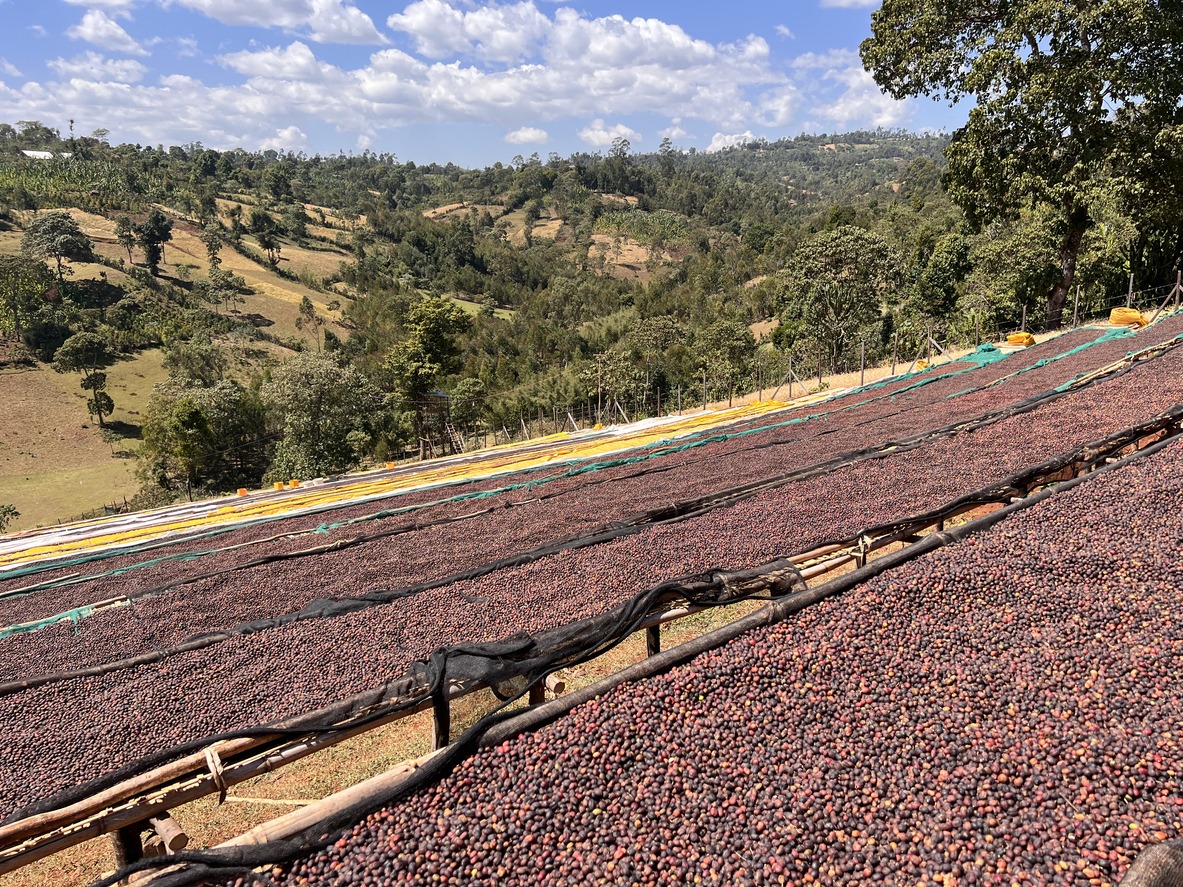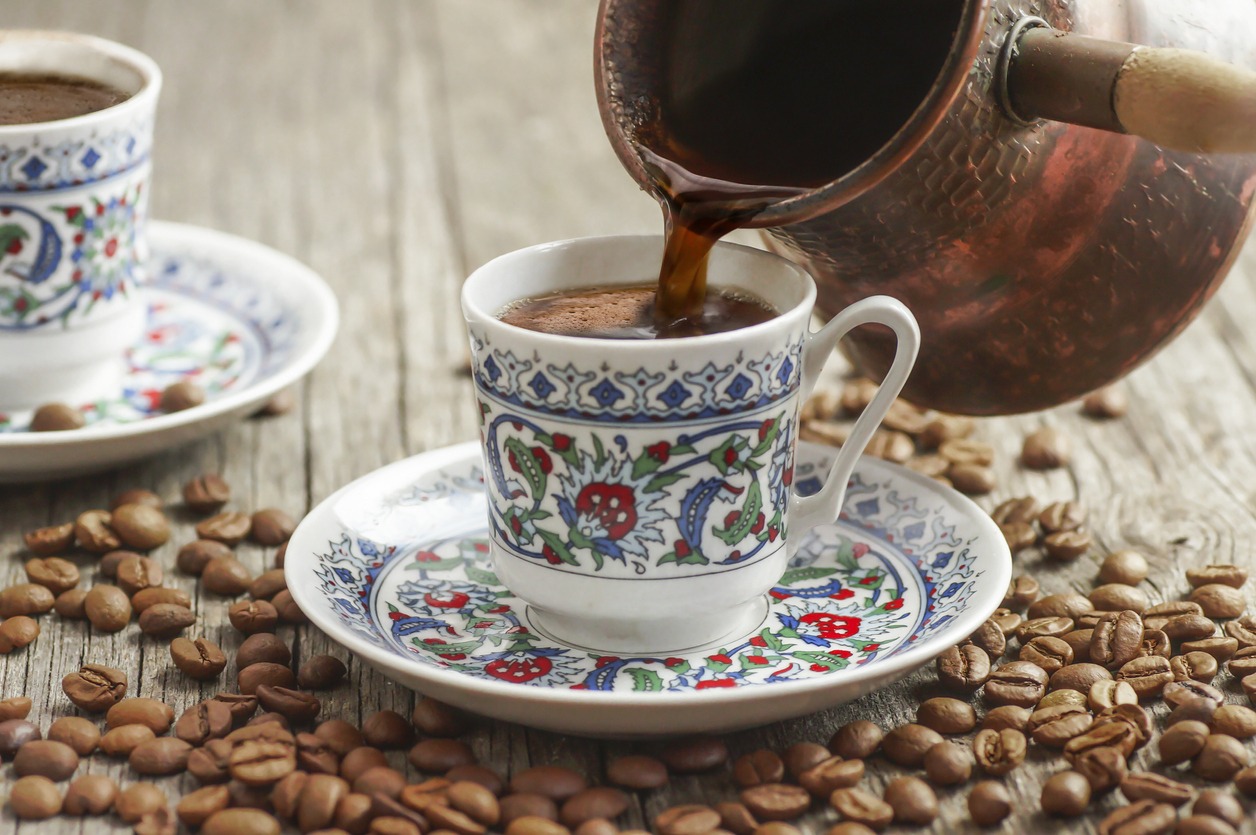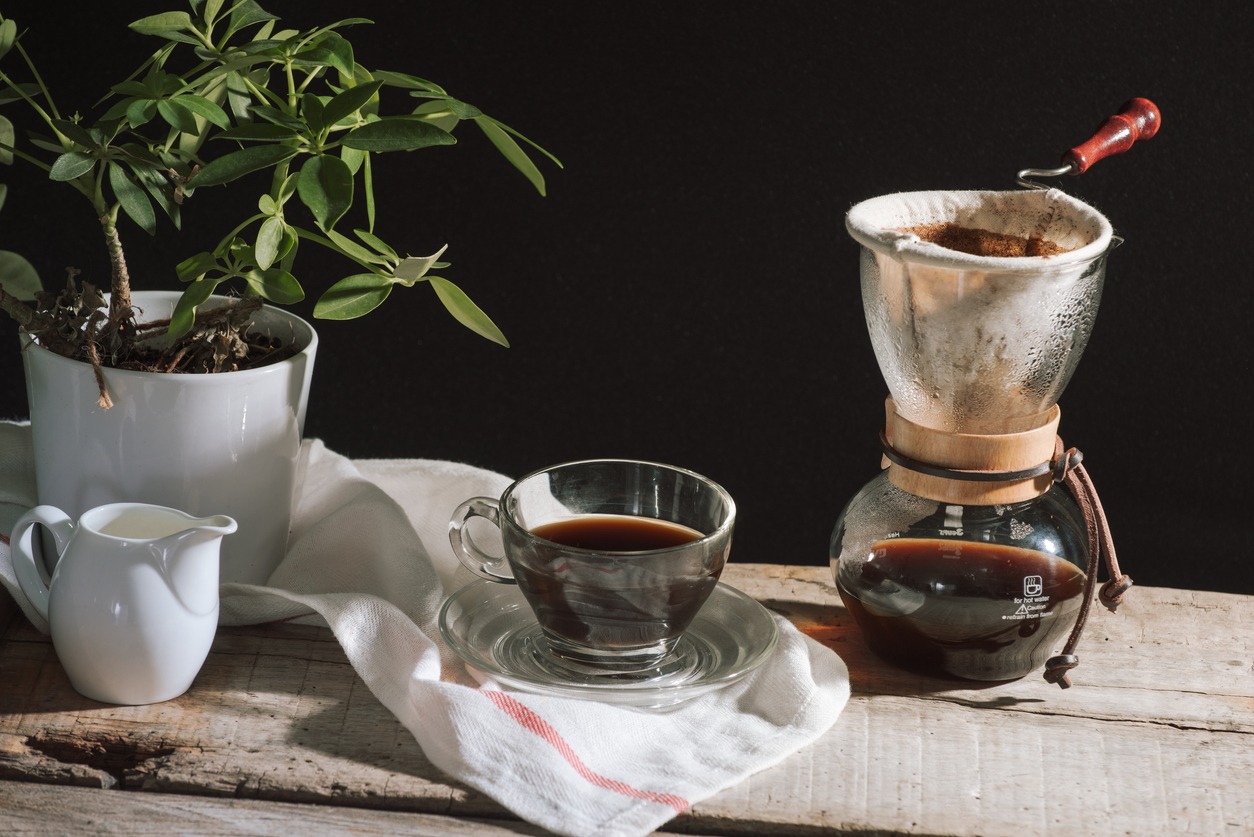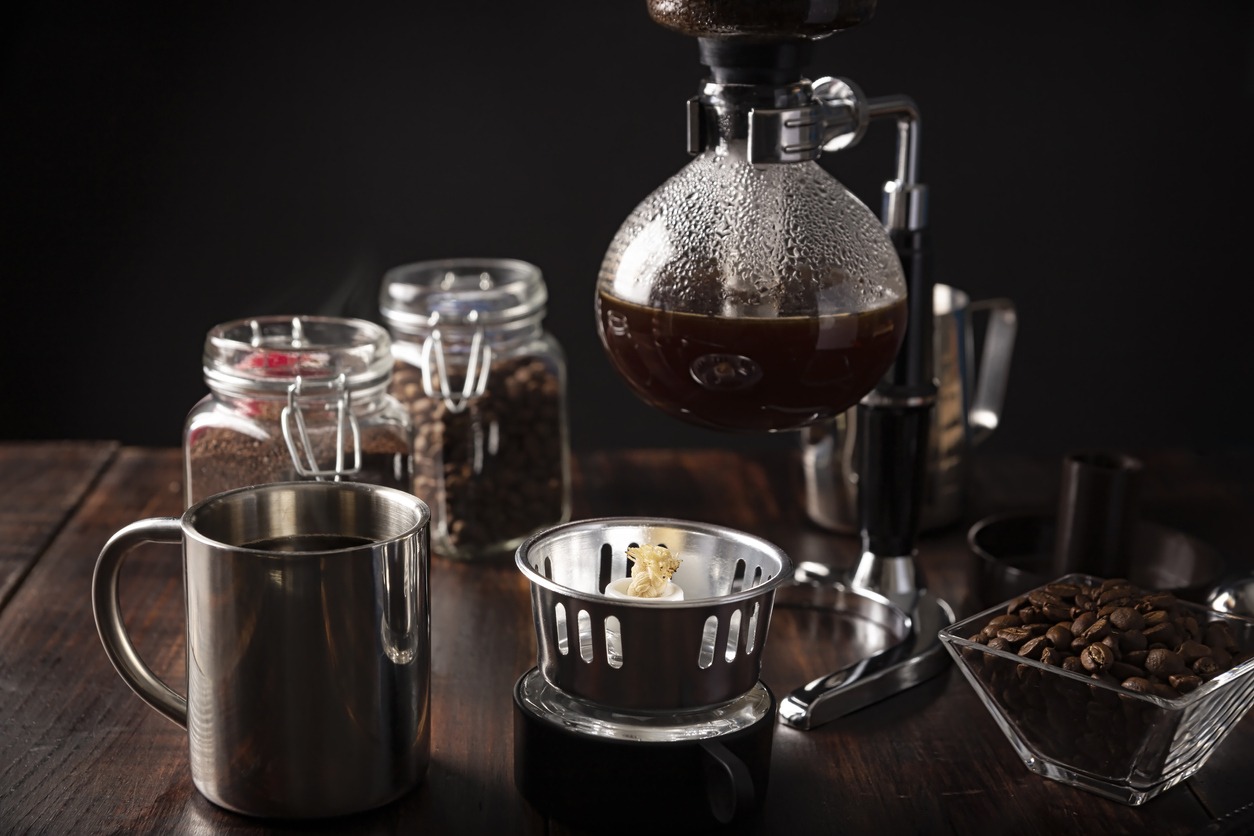Introduction
If you’re looking to dive into the captivating world of coffee and tea, there’s more than meets the eye beyond your trusty drip coffee maker or tea infuser. Around the globe, diverse cultures have developed unique brewing methods that add a dash of tradition and a sprinkle of innovation to the art of making these beloved beverages. In this article, we will embark on a journey to explore some of the most intriguing and distinct brewing methods from different corners of the world. From the ancient Ethiopian coffee ceremony to the Japanese art of matcha preparation, we’ll unveil the stories, rituals, and techniques that make each method a rich tapestry of culture and flavor. So, grab your passport for the palate and join us in uncovering the world’s most unique and enchanting coffee and tea brewing traditions.
The Global Popularity of Coffee
Coffee has achieved a remarkable global popularity that transcends borders and cultures. It has become more than just a beverage; it’s a symbol of community, a source of comfort, and a ritual that unites people worldwide. From the bustling streets of New York City to the tranquil villages of Ethiopia, coffee shops are ubiquitous, offering a space for socializing, work, or relaxation. The globalization of coffee has introduced a rich variety of flavors, preparation methods, and traditions, making it a versatile and universally appreciated drink. Its ability to adapt to local customs and preferences, from the strong and sweet brews of the Middle East to the meticulously crafted espressos of Italy, is a testament to its enduring global appeal.
Diversity in Coffee Brewing Methods
Diversity in coffee brewing methods is a testament to the rich tapestry of coffee culture around the world. From the centuries-old tradition of Turkish coffee, with its finely ground beans and unique preparation, to the modern and precise methods like pour-over and espresso, coffee enthusiasts have a wide array of choices to suit their preferences. This diversity not only caters to various flavor profiles but also reflects the cultural, technological, and personal evolution of coffee consumption. Whether you prefer the simplicity of a French press, the convenience of a single-serve pod machine, or the artistry of a siphon brewer, the world of coffee offers something for everyone, celebrating the global nature of this beloved beverage.
Ethiopia: The Birthplace of Coffee
Nestled in the heart of the African continent, Ethiopia boasts a rich tapestry of culture, history, and natural beauty. Yet, perhaps its most famous contribution to the world is the birth of coffee. In this short journey, we explore the captivating story of how the humble coffee bean originated in the rugged highlands of Ethiopia and went on to conquer the globe, becoming an integral part of our daily lives.
Traditional Ethiopian Coffee Ceremony
The traditional Ethiopian coffee ceremony, known as “Bunna,” is a cultural treasure that embodies the rich history and hospitality of this East African nation. It is a highly ceremonial and communal process that symbolizes the importance of togetherness. The ceremony typically takes place in a home or a gathering space, with a special emphasis on hospitality. The host or hostess, often adorned in traditional clothing, carefully roasts green coffee beans in a flat pan over an open flame, filling the air with the tantalizing aroma of freshly roasted coffee.
The roasted beans are then ground by hand using a mortar and pestle, producing a coarse coffee powder. The coffee grounds are subsequently placed in a special pot called a “jebena” and brewed over hot coals. The brewing process is slow and deliberate, allowing time for conversation and storytelling. Once the coffee is ready, it is served in small, handle-less cups called “sini.” The pouring of the coffee is an art form in itself, with the host carefully lifting the jebena high above the cups, creating a unique and engaging experience. Participants in the ceremony often engage in lively discussions, sharing stories, and fostering a strong sense of community. The Ethiopian coffee ceremony is not just about the coffee; it’s a profound symbol of hospitality and unity, making it a cherished tradition in Ethiopian culture.
Significance and Cultural Aspects
The Ethiopian coffee ceremony is far more than just a method of preparing a caffeinated beverage; it’s a ritual deeply steeped in cultural significance and social connections. Understanding the key aspects of its cultural significance can shed light on the importance of this centuries-old practice in Ethiopian society.
Hospitality and Community
The Ethiopian coffee ceremony is a symbol of hospitality and community. Inviting guests into one’s home for this ceremony is a gesture of warmth and welcome. It’s a way of saying, “You are important to me,” and an opportunity to strengthen social bonds. Coffee ceremonies often act as a unifying force within families and neighborhoods.
Connection to Tradition
Ethiopia is often regarded as the birthplace of coffee, and the coffee ceremony serves as a link to this rich tradition. Through the meticulous steps of washing, roasting, grinding, and brewing, Ethiopians celebrate the heritage and history of coffee, passing down this tradition from one generation to the next.
Conversation and Storytelling
The Ethiopian coffee ceremony is not merely about the coffee itself; it’s a platform for meaningful conversation and storytelling. During the brewing process, participants engage in dialogues, share stories, and connect on a deeper level. It provides a break from the hustle and bustle of everyday life, offering an opportunity for genuine human connection.
Respect for Elders
In Ethiopian culture, respecting one’s elders is of paramount importance. The coffee ceremony is often a way for younger generations to show their respect to their elders. In some cases, the oldest member of the group may be the one to perform the coffee ceremony, signifying their role as the family or community elder.
Ritual and Symbolism
The coffee ceremony involves a series of precise steps, from the washing of the beans to the roasting and brewing. Each step carries its own symbolic meaning. For instance, the scattering of fresh grass on the floor represents renewal and rebirth. The aroma of the roasted coffee symbolizes the blessings of life.
Women’s Role
In many Ethiopian communities, women are traditionally responsible for the coffee ceremony. This practice empowers women as hosts and nurturers of community relationships. The role of the “coffee woman” is highly respected.
Timelessness
The Ethiopian coffee ceremony is a reminder of the value of taking time in an increasingly fast-paced world. The slow and deliberate nature of the ceremony encourages participants to appreciate the present moment and the connections they are forming.
The Ethiopian coffee ceremony is not just about brewing coffee; it’s about nurturing relationships, connecting with tradition, and embracing the timeless art of conversation. It is a practice that has bound communities together for generations, emphasizing the importance of shared experiences and the deep-rooted cultural values of hospitality, respect, and unity.
Italy: The Art of Espresso
In the heart of Italy, where every street seems to whisper tales of history and art, there exists a tradition that has become an indelible part of the nation’s identity—the art of espresso. Beyond the iconic landmarks and renaissance masterpieces, the espresso culture in Italy is a vibrant and essential aspect of daily life.
Espresso Brewing Technique
Espresso brewing is a highly specialized method that produces a concentrated coffee shot known as “espresso.” Here is a brief overview of the espresso brewing technique:
- Coffee Beans: Espresso starts with high-quality coffee beans. Espresso-specific blends or single-origin beans with a medium to dark roast are commonly used. The beans should be ground to a fine consistency, similar to table salt.
- Portafilter: A portafilter is a handle-like device with a filter basket. The ground coffee is dosed into this basket, usually about 18-20 grams for a standard double shot of espresso.
- Tamping: Tamping is the process of compressing the coffee grounds evenly in the portafilter. A tamper is used to apply uniform pressure, typically around 30 pounds of force, to create a level, evenly packed puck of coffee.
- Espresso Machine: The portafilter is inserted into the espresso machine, which forces hot water, typically between 195°F to 205°F (90°C to 96°C), through the coffee grounds at high pressure (usually 9-15 bars) for about 25-30 seconds.
- Extraction: The high-pressure water extracts the coffee’s oils, flavors, and aromas, creating a rich, concentrated shot of espresso that is topped with crema, a layer of frothy, caramel-colored liquid.
- Timing and Grind: The shot’s timing is crucial. It’s typically about 25-30 seconds for a double shot. If the shot pulls too quickly, it may be under-extracted and taste sour; if it’s too slow, it could be over-extracted and taste bitter. Adjustments to the grind size can help achieve the right extraction time.
- Serving: Espresso is usually served in small cups, known as demitasse cups. It can be enjoyed as a straight shot or used as the base for various espresso-based drinks like lattes, cappuccinos, and Americanos.
Espresso brewing is both an art and a science, with baristas carefully controlling variables like grind size, tamping pressure, water temperature, and extraction time to create the perfect shot of this intense and flavorful coffee.
Variations and Italian Coffee Culture
In Italy, coffee isn’t just a caffeine fix; it’s an integral part of daily life, a cultural cornerstone, and a source of pride. The world of Italian coffee culture is as diverse as the country’s rich history, and it offers a multitude of coffee variations that cater to different tastes and occasions. Here, we explore the nuanced and cherished variations of espresso-based beverages that make up the Italian coffee landscape.
- Espresso (Caffè): The purest form of Italian coffee, espresso, is the foundation of all espresso-based beverages. It’s a concentrated shot of coffee served in a small demitasse cup, usually without sugar or milk. Italians often enjoy this quick caffeine boost while standing at the bar.
- Cappuccino: The cappuccino, a beloved classic, combines espresso with equal parts of steamed milk and milk foam. It’s typically consumed in the morning, never after 11 a.m. according to traditional Italian coffee etiquette.
- Latte Macchiato: Translating to “stained milk,” this coffee features warm milk “stained” or “marked” with a shot of espresso. It’s a milder option than a cappuccino and is popular as an afternoon pick-me-up.
- Caffè Americano: Italians may consider this a bit unconventional, as it’s essentially a diluted espresso with added hot water. But it’s a preference for those who prefer a milder, larger coffee.
- Macchiato: A macchiato is a shot of espresso “stained” with a small amount of frothy milk. Variations include the caramel macchiato or the latte macchiato, which is the opposite—steamed milk “stained” with a shot of espresso.
- Marocchino: Hailing from the Piedmont region, this delightful drink combines espresso, frothy milk, and cocoa powder, creating a harmonious blend of bitter and sweet.
- Affogato: For a delicious treat, espresso is poured over a scoop of vanilla gelato or ice cream, creating a dessert-like coffee experience.
- Shakerato: A refreshing, summertime favorite, the shakerato involves shaking espresso with ice and a touch of sugar, creating a frothy, chilled delight.
- Mocha (Caffè Mocha): Combining espresso, steamed milk, and cocoa, the mocha is an indulgent choice, often topped with whipped cream.
- Corretto: Translating to “corrected coffee,” this drink is espresso “corrected” with a shot of grappa, sambuca, or another liqueur. It’s a warming and spirited option.
Italian coffee culture is as diverse as the country itself, and each variation of coffee holds a special place in daily life. Beyond the beverages, it’s the rituals, the social gatherings, and the reverence for quality that make Italian coffee culture truly special. Whether you’re sipping a quick espresso at the bar, enjoying a leisurely cappuccino, or indulging in a decadent affogato, every cup of Italian coffee is an invitation to savor the moment and embrace the rich heritage of coffee in Italy.
Turkey: Brewing with Tradition
In the vibrant and bustling bazaars of Istanbul, amid the echoes of history and the fragrance of spices, another timeless tradition unfolds—the art of Turkish coffee. With its roots dating back centuries, Turkish coffee is more than just a drink; it’s a cultural symbol, a bridge between the past and the present.
Turkish Coffee Preparation
In the heart of Turkey, the preparation of Turkish coffee is a meticulously choreographed dance, a time-honored ritual that’s steeped in tradition and detail. Every step is an art form, and every cup is a glimpse into the rich history and culture of the region. Here, we unveil the intricate process of brewing Turkish coffee, from selecting the beans to sipping the final cup.
The Beans
The foundation of a good Turkish coffee is the coffee beans. They should be of high quality and freshly roasted to capture the essence of the coffee. Arabica beans are often preferred for their smooth flavor.
The Grind
Turkish coffee demands an extra-fine grind, almost as fine as powdered sugar. This fine grind is essential to achieve the desired texture and flavor.
The Water
Pure, fresh water is a must. Cold water is added to the special pot, known as a “cezve” or “ibrik,” before any other ingredients.
Sugar (Optional)
The addition of sugar is a personal preference and is determined before the brewing begins. The amount varies from no sugar (sade) to extremely sweet (şekerli).
Coffee and Boiling
The finely ground coffee is added to the cold water in the cezve, along with sugar if desired. The mixture is then heated slowly over low to medium heat. Importantly, it should never be stirred after this point.
The Froth
As the coffee mixture heats, a frothy layer begins to form. This foam, known as “kaymak,” is a prized component of the coffee and is carefully preserved.
The Boil and Rise
Once the coffee begins to froth and rise, it’s removed from the heat to prevent it from boiling over. This process is repeated a few times to ensure the coffee grounds are evenly distributed.
Presentation
Turkish coffee is traditionally served in small cups known as “fincan.” The cezve is used to pour the coffee, ensuring that the grounds are evenly distributed in each cup.
Wait and Sip
It’s customary to wait a moment for the grounds to settle before sipping your coffee. This brief pause allows the grounds to sink to the bottom, preserving the clarity and taste of the coffee.
Fortune Telling (Optional)
Turkish coffee often includes a fun and mystical aspect of fortune telling. The coffee grounds left at the bottom of the cup can be used for “tasseography,” a practice in which symbols and patterns are interpreted to reveal one’s future.
Brewing Turkish coffee is not merely a method of making a beverage; it’s a profound cultural practice that has endured for centuries. The elaborate process, rich history, and meticulous attention to detail that Turkish coffee demands make each cup a gateway to the past, a celebration of the present, and an invitation to savor every moment.
Cultural Importance of Turkish Coffee
The cultural importance of Turkish coffee transcends the realms of culinary delight; it’s a symbol of heritage, hospitality, and shared moments in Turkish culture. This ancient brew is woven into the very fabric of Turkish society, reflecting the nation’s deep-rooted traditions and the art of human connection. The process of brewing and serving Turkish coffee is far from hurried; it’s a ceremony that promotes contemplation and conversation. It’s the vessel through which stories are shared, friendships are forged, and families come together. The practice of fortune telling with coffee grounds adds an element of mystique and entertainment to gatherings. Turkish coffee embodies the concept of “keyif” – the pleasure in savoring the moment, an integral part of Turkish life. In the winding streets of Istanbul or the quiet corners of Turkish homes, the preparation and sharing of this coffee encapsulate the warmth and timelessness of Turkish culture, creating a sense of belonging that transcends generations. Turkish coffee is not just a beverage; it’s a cultural treasure chest, preserving the past and connecting the present in the most delightful and meaningful way.
Vietnam: Drip Filter Brewing
Nestled in the lush landscapes of Southeast Asia, Vietnam is a country of vibrant colors, rich traditions, and, of course, captivating coffee culture. Among its many coffee brewing methods, the drip filter coffee stands out as a beloved and distinctive choice.
The Phin Brewing Method
In the bustling streets of Hanoi or the tranquil countryside of Vietnam, one can find the Phin filter, an unassuming yet essential tool for crafting the nation’s cherished drip filter coffee. The Phin is not just a device; it’s the embodiment of a time-honored tradition, a window into Vietnamese coffee culture. Here, we explore the Phin brewing method, from its components to its meticulous process, and we discover why it’s a beloved treasure in the heart of Vietnam.
The Phin Filter
The Phin is a small, gravity-fed coffee filter. It consists of four main parts: a drip tray, a chamber for the coffee grounds, a perforated insert, and a cap to keep the heat in. The filter is typically made of stainless steel, making it durable and long-lasting.
Fresh Grounds
Like any coffee brewing method, the quality of the coffee grounds is paramount. Vietnamese coffee, often a blend of Robusta and Arabica beans, is ground to a medium-coarse consistency. Freshly ground beans yield the best flavor.
Assembly
To begin the process, the perforated insert is placed in the chamber, and the coffee grounds are added to it. The insert is gently pressed down to compact the grounds.
Preparation
A small amount of hot water is poured into the Phin, just enough to wet the coffee grounds. This “blooming” stage allows the coffee to release gases and expand.
Drip Time
Once the grounds have bloomed, hot water is added to the Phin, filling it to the top. The brewing process begins, and the water slowly drips through the coffee grounds into the cup below.
Patience
Phin brewing is not a hasty affair. It can take several minutes for the hot water to fully pass through the coffee grounds and into the cup. The result is a flavorful, concentrated coffee.
Condensed Milk or Ice (Optional)
Traditional Vietnamese coffee is often enjoyed with a layer of sweetened condensed milk at the bottom of the cup. For iced coffee, a cup of ice is placed beneath the Phin, allowing the brewed coffee to drip directly onto the ice.
Sip and Savor
The final cup is rich, intense, and can be customized to taste with additional sugar or condensed milk. It’s a unique blend of strong coffee and sweet, creamy notes.
The Phin brewing method encapsulates the essence of Vietnamese coffee culture—patient, meticulous, and flavorful. Whether enjoyed as a quick pick-me-up at a bustling street-side café or as a moment of tranquility in a countryside home, Vietnamese drip filter coffee brings people together over a shared love for this aromatic and cultural treasure.
Vietnamese Iced Coffee and its Popularity
In the midst of Vietnam’s tropical heat, where humidity is often the order of the day, one drink has risen to iconic status – Vietnamese Iced Coffee, or “Cà phê đá.” This chilly, invigorating concoction is more than just a way to beat the heat; it’s a cultural sensation that’s achieved international acclaim. In this exploration, we delve into the mesmerizing world of Vietnamese Iced Coffee, uncovering the components, the brewing process, and the remarkable surge in popularity that has made it a global favorite.
Components
At the heart of Vietnamese Iced Coffee is the robust and darkly roasted coffee, often a blend of Robusta and Arabica beans. The coffee grounds are typically coarsely ground, allowing for a slower drip process and a rich, bold flavor. But what truly sets this brew apart is the liberal use of sweetened condensed milk, which adds a delightful creamy sweetness to the mix.
Brewing Process
Vietnamese Iced Coffee is most often made using the Phin filter, a small, gravity-fed drip filter. The coarsely ground coffee is placed in the filter chamber, and hot water is added, allowing for a slow, controlled drip process. The brewed coffee then drips onto a glass filled with ice and sweetened condensed milk, creating a harmonious blend of temperatures and flavors.
Popularity
Vietnamese Iced Coffee has not only garnered a dedicated following in its home country but has also won the hearts of coffee enthusiasts around the world. Its rise in popularity can be attributed to several factors. First, it offers a tantalizing contrast of intense coffee and sweet creaminess, making it an irresistible treat. Second, its versatility allows for adjustments in sweetness and strength, catering to a variety of tastes. Moreover, the method of preparation itself, using the Phin filter, has an artisanal quality that resonates with the modern coffee culture’s appreciation for craftsmanship. Lastly, its adaptability to local preferences and innovative variations, such as egg coffee or coconut coffee, showcases the dynamism of this beloved drink.
Vietnamese Iced Coffee is more than just a caffeinated beverage; it’s an embodiment of the vivacity of Vietnamese culture and a testament to the global allure of this complex yet refreshing brew. Whether enjoyed on a busy street corner in Hanoi, a trendy café in New York, or a peaceful garden in Saigon, it’s a drink that transcends borders, uniting coffee lovers in their appreciation for its invigorating and sweetly satisfying nature.
Japan: Kyoto-Style Cold Brew
In the heart of Japan, where ancient traditions harmonize with modern innovations, there exists a captivating coffee culture that is both serene and sophisticated. Kyoto-Style Cold Brew, known as “Kyoto coffee” or “Mizudashi,” is a testament to the Japanese commitment to perfection in taste and aesthetics.
The Process of Kyoto-Style Brewing
Kyoto-Style Cold Brew, or “Mizudashi,” is a time-honored Japanese method of coffee brewing that combines the tranquility of ancient traditions with the modern appeal of a refreshing and elegant coffee. The process is a testament to meticulous care and precision. Here, we unveil the steps to create Kyoto-Style Cold Brew, where time is a crucial ingredient and patience is the key to a delightful result.
High-Quality Coffee Beans
Begin with a selection of high-quality coffee beans. Single-origin beans with distinct flavor profiles work exceptionally well, but the choice of beans largely depends on your taste preferences.
Coarse Grind
Grind the coffee beans to a coarser consistency than what is typically used for hot coffee. A coarse grind is essential to prevent over-extraction during the extended brewing process.
Coffee-to-Water Ratio
Measure your coffee grounds. A general guideline is around 1 ounce (28 grams) of coffee per 16 ounces (475 ml) of cold, filtered water. Adjust this ratio according to your preferred strength.
Ice-Cold Filtered Water
Pour the cold, filtered water over a bed of ice cubes in a glass container or slow-drip apparatus. The ice helps to maintain a consistent and cool temperature throughout the brewing process.
Gentle Stir
Gently stir the coffee grounds and ice-cold water together, ensuring that the grounds are thoroughly saturated.
Brew Time
The hallmark of Kyoto-Style Cold Brew is the extended brewing time, often lasting anywhere from 8 to 24 hours. The slow-drip apparatus, consisting of a vessel with a valve, allows for a controlled and gradual extraction.
Filtration
After the lengthy brewing period, the cold brew concentrate is slowly filtered through a fine mesh or a paper filter to remove the coffee grounds. The resulting liquid is a concentrated coffee extract.
Dilution
To serve, dilute the concentrated coffee extract with an equal amount of cold, filtered water, or to your desired strength. Over ice is the traditional way to enjoy Kyoto coffee, but you can also opt for it straight or with a touch of milk or sweetener.
Presentation
Kyoto-Style Cold Brew is often served in tall glasses, sometimes with the addition of a citrus peel or a slice of fruit for a refreshing twist.
The appeal of Kyoto-Style Cold Brew lies not just in its flavor, which is smooth, sweet, and less acidic than hot-brewed coffee, but also in the mesmerizing visual spectacle of its slow-drip brewing process. It’s a testament to the Japanese devotion to craft, and it embodies the harmony of nature, time, and technique. Whether you’re sipping it in a bustling café in Kyoto or preparing it at home, Kyoto-Style Cold Brew offers a refreshing and contemplative coffee experience.
The Appeal of Japanese Cold Brew
Japanese Cold Brew, specifically Kyoto-Style Cold Brew, holds a unique and enduring appeal that transcends its delicious flavor. Its popularity has rapidly spread beyond Japan, captivating coffee enthusiasts worldwide. There are several key reasons behind its magnetic charm:
- Smooth and Balanced Flavor: The slow-drip brewing process extracts the coffee’s nuanced flavors without the bitterness or acidity that hot brewing can sometimes produce. The result is a remarkably smooth, balanced, and subtly sweet coffee that’s both refreshing and complex.
- Aesthetics: The mesmerizing, slow-drip brewing apparatus used in Kyoto-Style Cold Brew is a sight to behold. It’s an artful and contemplative process that adds an element of beauty and tranquility to the coffee experience, making it as visually appealing as it is delicious.
- Versatility: Japanese Cold Brew is incredibly versatile. You can tailor it to your preferred strength and flavor by adjusting the coffee-to-water ratio or the dilution level. It can be enjoyed straight, on the rocks, with milk, or with sweeteners, offering a coffee experience that caters to individual tastes.
- Refreshing and Energizing: The cold, crisp nature of this coffee makes it a perfect choice for warm weather or as a revitalizing pick-me-up. Its gentle caffeine boost can provide a refreshing jolt of energy.
- Cultural Significance: Kyoto-Style Cold Brew is deeply rooted in Japanese culture, emphasizing the harmony between nature and technique. Its slow and methodical brewing process reflects the Japanese approach to craftsmanship and precision, making it an embodiment of cultural significance.
- Social and Sensory Experience: The slow-drip brewing process is not just a means to an end but an experience in itself. It encourages mindfulness and can be a social focal point, whether you’re brewing it with friends or enjoying a cup at a café.
- Accessibility: While traditionally brewed in slow-drip apparatuses, Japanese Cold Brew is also accessible to home brewers. You don’t need specialized equipment to create a delicious cold brew; a simple mason jar or French press can suffice.
The global appeal of Japanese Cold Brew lies in its multifaceted nature. It’s not just a beverage; it’s a cultural connection, a sensory journey, and an artistic expression. Whether you’re captivated by its exquisite flavor, entranced by the brewing process, or drawn to its cultural significance, Japanese Cold Brew continues to enchant coffee lovers and remains a testament to the timeless allure of the world of coffee.
Colombia: “Sock” Coffee Brewing
Nestled in the heart of South America, Colombia is renowned for its stunning landscapes, vibrant culture, and, of course, its exceptional coffee. Among the various coffee brewing methods that have thrived in this coffee-rich nation, one stands out as a symbol of simplicity and tradition—the “sock” coffee brewing method.
Traditional Colombian Brewing Technique
Colombia, a country with an illustrious coffee heritage, has its unique approach to brewing coffee, known as the “sock” or “media de toalla” method. This traditional technique, though unassuming, is an integral part of Colombian coffee culture. Here, we’ll unveil the method behind this age-old practice, exploring the steps and cultural significance of brewing coffee from a sock.
The Ingredients
As with any great cup of coffee, the quality of the coffee beans is paramount. Colombian coffee beans, often grown at high altitudes, are celebrated for their vibrant flavor. The beans are coarsely ground, akin to breadcrumbs, to suit the sock brewing method.
The “Media de Toalla” (Sock Filter)
A rectangular piece of cloth, usually resembling a sock or towel, serves as the filter. It’s often made of cotton or linen and is tightly folded and sewn to form a pouch.
The Brewing Pot
The brewing process typically takes place in a large pot, traditionally called a “pichancha.” This vessel is filled with water, and the coffee will eventually brew in it.
The Coffee Pouch
The coarsely ground coffee is placed inside the “media de toalla,” and the pouch is tied securely with a string. This makeshift filter functions as the key to the brewing process.
The Infusion
The coffee pouch is gently placed in the water-filled pot, allowing the coffee to infuse. The water is heated over a low flame, and the coffee begins to brew slowly.
Simmering
The pot is kept on a gentle simmer, and the coffee infuses into the water over a period of time. The duration of the brewing process can vary, but it’s generally longer than the quicker methods of brewing coffee.
Aromatic Release
The extended brewing time allows for a more complete release of coffee’s aromatic compounds, resulting in a deeply flavorful brew.
Serving
Once the coffee has infused to the desired strength, it’s typically poured directly into a cup or a mug. While in some variations, the pot with the coffee pouch is brought to the table, and each cup is filled there.
Enjoyment
Colombian coffee brewed from a “sock” is typically served black and has a robust and bold flavor, often with hints of cocoa, nuts, and berries. It’s traditionally savored without the addition of milk or sugar.
The Colombian “sock” coffee brewing method is more than just a technique; it’s a cherished tradition that reflects the authenticity of Colombian coffee culture. The process, while simple, allows for a deeply flavorful cup, accentuating the rich and vibrant flavors of Colombian coffee. Whether brewed on a rural coffee farm or in the bustling urban streets of Bogotá, this method is a reminder that, in the world of coffee, simplicity can yield profound and delightful results.
The Flavor Profile of Colombian Coffee
Colombian coffee is celebrated worldwide for its exceptional flavor profile, a harmonious blend of qualities that reflect the nation’s diverse landscapes, climate, and coffee cultivation practices. Here, we explore the key flavor characteristics that make Colombian coffee a standout in the world of coffee:
- Bright Acidity: Colombian coffee is known for its bright, lively acidity. This acidity is often likened to a citrus-like quality, providing a zesty and refreshing element to the cup. It’s not overly sharp but rather balanced and inviting.
- Medium to Full Body: Colombian coffee typically exhibits a medium to full body. It has a satisfying weight on the palate, contributing to a creamy, smooth mouthfeel that enhances the overall drinking experience.
- Balanced Flavor: What sets Colombian coffee apart is its remarkable balance. It’s a coffee that strikes equilibrium between its various flavor notes, making it an excellent choice for those who appreciate complexity without overwhelming intensity.
- Sweetness: Colombian coffee is often noted for its natural sweetness. You can expect hints of caramel, brown sugar, or even fruity sweetness in the flavor profile. This sweetness adds depth and charm to the cup.
- Nutty and Chocolate Notes: Colombian coffee frequently exhibits nutty and chocolatey undertones. Roasted nuts, almonds, and cocoa are common tasting notes, providing a comforting and familiar quality.
- Fruity Undertones: Depending on the specific growing region and the coffee varietal, Colombian coffee can offer fruity undertones. These can range from subtle notes of red apple and pear to more pronounced flavors like berries or stone fruits.
- Floral Aromas: Colombian coffee is also known for its delicate floral aromas. You may encounter fragrances reminiscent of jasmine, rose, or honeysuckle, adding a layer of elegance to the overall sensory experience.
- Vibrant and Clean Finish: A hallmark of Colombian coffee is its vibrant and clean finish. The flavors don’t linger with excessive bitterness; instead, they end with a crisp and refreshing aftertaste.
- Regional Diversity: The flavor profile of Colombian coffee can vary significantly from one region to another. Coffee cultivated in the Andean region, for instance, may showcase distinct characteristics compared to coffee from the Sierra Nevada.
- Altitude Influence: The elevation at which coffee is grown in Colombia plays a significant role in shaping its flavor profile. High-altitude regions tend to produce coffee with bright acidity and complex flavors.
The flavor profile of Colombian coffee is a testament to the nation’s dedication to coffee cultivation and its diverse growing regions. It’s a cup that delivers a symphony of flavors, inviting coffee connoisseurs to explore the rich tapestry of tastes that Colombia has to offer. Whether enjoyed in a bustling café in Bogotá or brewed at home, Colombian coffee is a delightful journey of flavor that embodies the essence of this coffee-rich nation.
Scandinavian Coffee Culture
In the northern realms of Europe, where pristine landscapes, innovative design, and a deep-rooted appreciation for the finer things in life converge, there exists a distinctive and enchanting coffee culture—the Scandinavian coffee culture. From the fjords of Norway to the archipelagos of Sweden and the cozy corners of Danish cities, the Nordics have cultivated a profound relationship with coffee.
Preference for Light Roasts
In the heart of Scandinavian coffee culture, a clear preference for light roasts reigns supreme. This distinct predilection for lighter coffee beans is deeply ingrained in the region’s coffee traditions and is a reflection of the Nordic ethos. Here are the key reasons behind the Scandinavian love for light roasts:
Emphasis on Flavor Complexity
Light roasting allows the inherent flavors of the coffee beans to shine through. Scandinavians value the nuanced and intricate flavor profiles that lighter roasts offer, ranging from floral and fruity notes to vibrant acidity.
Transparency and Purity
Scandinavian coffee culture has a strong focus on transparency in coffee sourcing. Lighter roasts are preferred because they preserve the unique characteristics of the coffee beans, showcasing their origin and terroir without heavy roasting flavors.
The Nordic Sweet Spot
The Nordic palate is finely attuned to the subtleties of taste, often favoring clean and gentle flavors. Light roasts align with this preference, offering a sweet and mild coffee experience that’s highly enjoyable.
Acidity and Balance
Light roasts are celebrated for their bright acidity, which adds vibrancy to the cup. Scandinavians appreciate the balance that acidity brings to their coffee, creating a refreshing and well-rounded taste.
Food Pairing
In Scandinavia, coffee is often enjoyed with a variety of sweet treats, pastries, and desserts. The light roast’s clean and delicate flavors complement these accompaniments, creating a harmonious pairing.
Specialty Coffee Movement
The Nordic region has been at the forefront of the specialty coffee movement, with an emphasis on quality, sustainability, and ethical sourcing. Light roasts are a natural choice in this movement as they accentuate the unique qualities of single-origin beans.
Morning Ritual
Coffee is a cherished part of the Scandinavian morning ritual. Lighter roasts, with their bright and vibrant qualities, serve as an invigorating start to the day.
Cultural Tradition
Coffee breaks, known as “fika” in Sweden and “kaffeepaus” in Norway, are integral to Scandinavian culture. Light roasts, often brewed using methods like pour-over or Aeropress, are preferred for these moments of reflection and connection.
Scandinavian coffee culture embraces the art of savoring coffee, exploring its delicate flavors, and celebrating its natural sweetness. This love for light roasts embodies the region’s commitment to quality, transparency, and the enjoyment of life’s simple pleasures. Whether it’s the sunlit streets of Stockholm, the cozy cafes of Copenhagen, or the charming fjord-side villages of Norway, the preference for light roasts is a defining feature of Scandinavian coffee culture.
Brewing Methods and Coffee Consumption
In Scandinavian coffee culture, the brewing methods chosen are as integral to the coffee experience as the coffee beans themselves. This region has a penchant for manual brewing methods that emphasize precision, craftsmanship, and the preservation of nuanced flavors. Here are some of the preferred brewing methods and their connection to coffee consumption in Scandinavia:
Pour-Over Coffee
Pour-over coffee is a favored brewing method in Scandinavia, celebrated for its meticulous approach. The slow and controlled process allows for the extraction of nuanced flavors, which is highly valued in the region. It’s not uncommon to find Scandinavian coffee enthusiasts brewing their morning cup using a Hario V60 or a Chemex pour-over setup.
Aeropress
The Aeropress, a device known for its versatility, has found a special place in Scandinavian coffee culture. It’s prized for its ability to produce a clean and flavorful cup of coffee. Its efficiency aligns well with the busy lifestyles of Scandinavians who still seek a high-quality coffee experience.
Siphon Brewing
The siphon, or vacuum, brewing method is embraced by those who appreciate the theatrical aspect of coffee preparation. The siphon’s ability to highlight the unique flavors of the coffee beans resonates with the Scandinavian love for quality and craftsmanship.
Cold Brew
Cold brew coffee, particularly in the warmer months, is a cherished choice in Scandinavia. Its refreshing and smooth qualities are perfect for enjoying coffee in the long daylight hours of summer.
Espresso-Based Drinks
While manual brewing methods are prominent, Scandinavian coffee culture also embraces espresso-based beverages. Espresso and cappuccinos are savored in specialty cafes, and the region boasts an emerging coffee shop scene where baristas experiment with latte art and flavor combinations.
Specialty Coffee Shops
Scandinavia is home to numerous specialty coffee shops that source beans from around the world, focus on ethical and sustainable practices, and educate consumers about the origins and flavors of the coffee they serve. These establishments are a testament to the region’s dedication to coffee excellence.
Coffee Consumption Rituals
In Scandinavia, coffee is not just a beverage; it’s a cultural institution. Traditional coffee breaks like “fika” in Sweden and “kaffeepaus” in Norway serve as moments of relaxation and social connection. People gather to enjoy a cup of coffee along with pastries, fostering a sense of community and well-being.
The preference for manual brewing methods in Scandinavia reflects the region’s commitment to the art and science of coffee. Whether it’s a meticulously brewed pour-over or a skillfully crafted espresso, the focus is on creating a coffee experience that’s rich in flavor and deeply satisfying. In this corner of the world, the way coffee is brewed is an integral part of the overall coffee culture, emphasizing craftsmanship, quality, and the celebration of life’s simple pleasures.
Costa Rica: Vandola Brewing
Nestled between the Pacific and Atlantic Oceans, Costa Rica is a nation of captivating natural beauty and a rich coffee heritage. Amid the lush rainforests and vibrant communities, an extraordinary coffee brewing method thrives—the Vandola.
The Vandola Brewing Method
In the heart of Costa Rica’s coffee culture, the Vandola brewing method reigns supreme as an iconic way to enjoy this nation’s rich coffee heritage. The Vandola, an emblem of Costa Rican traditions, captures the essence of a meticulously crafted and culturally significant coffee experience. Here, we unveil the steps and significance behind the Vandola brewing method.
The Coffee Beans
Begin with high-quality Costa Rican coffee beans, often sourced from the country’s renowned coffee-growing regions, like Tarrazú and Naranjo. The choice of beans is crucial, as it sets the stage for the flavor profile of the coffee.
Coarse Grinding
The coffee beans are coarsely ground, similar to breadcrumbs. This specific grind helps the coffee retain its unique flavors and ensures a consistent brew.
The Vandola
The Vandola itself is a specialized, large metal or clay pot, resembling a wide and shallow cooking vessel. It has a prominent handle and is designed to brew coffee over an open flame.
Water and Sugar
In the Vandola, water is brought to a gentle boil over an open flame. Costa Rican coffee is often brewed with sugar, which can be added to the pot at this stage. The sugar quantity can vary, depending on individual preferences.
Coffee Grounds
Once the water (and sugar) is hot, the coarsely ground coffee is introduced to the Vandola. It’s added directly to the boiling water, allowing the coffee to infuse as the mixture simmers.
Simmering and Stirring
The coffee and water simmer together, releasing their flavors into the brew. During this time, the coffee grounds are gently stirred to ensure an even extraction.
Infusion Time
The brewing process in the Vandola is notably longer than other methods, often exceeding ten minutes. This extended infusion period allows the coffee to develop a robust and full-bodied flavor.
Filtering
After the coffee has sufficiently brewed, the Vandola is removed from the heat. Traditionally, a fine-mesh sieve or cloth is used to separate the brewed coffee from the grounds. This ensures a clean cup without sediment.
Presentation
The Vandola-brewed coffee is traditionally served black, often in small cups known as “tazas.” It’s the perfect way to experience the coffee’s natural flavors.
The Vandola brewing method encapsulates the essence of Costa Rican coffee culture. It’s a process that demands time, patience, and attention to detail, reflecting the nation’s deep-rooted appreciation for craftsmanship and the art of coffee. Whether enjoyed in the serene coffee farms of Costa Rica’s highlands or at a local cafe in San Jose, Vandola-brewed coffee is a testament to the nation’s enduring coffee traditions and the celebration of its remarkable coffee beans.
Characteristics of Costa Rican Coffee
Costa Rican coffee is celebrated for its unique characteristics and distinct flavor profile, which reflect the nation’s rich coffee-growing traditions, diverse landscapes, and meticulous cultivation practices. Here are the key characteristics that make Costa Rican coffee stand out:
- Bright Acidity: Costa Rican coffee is renowned for its bright and lively acidity. This acidity is often likened to citrus-like qualities, such as notes of orange or lemon, which add a refreshing and vibrant element to the cup.
- Clean and Balanced Flavors: Costa Rican coffee boasts a clean and well-balanced flavor profile. It’s not overly intense or overpowering, allowing for the nuanced flavors to shine through. This balance is often achieved through careful processing and cultivation practices.
- Medium to Full Body: Costa Rican coffee typically has a medium to full body, which contributes to a satisfying mouthfeel and a sense of richness in the cup.
- Nutty and Chocolatey Undertones: You’ll often find subtle nutty and chocolatey undertones in Costa Rican coffee. These notes can range from almond to cocoa, adding a comforting and familiar quality to the flavor.
- Florals and Berries: Depending on the specific region and the coffee varietal, Costa Rican coffee may exhibit floral and fruity undertones. Notes of jasmine, rose, or berries, such as raspberry or blackberry, can add an extra layer of complexity.
- Sweetness: Costa Rican coffee is celebrated for its natural sweetness. It often has hints of brown sugar or caramel, which contribute to a delightful and well-rounded taste.
- High-Quality Arabica Beans: Costa Rican coffee is primarily made from Arabica coffee beans, known for their exceptional flavor and aroma. The country’s strict regulations and commitment to quality ensure that only the finest beans are exported.
- Microclimates and Terroir: The diversity of microclimates in Costa Rica, owing to varying altitudes and regions, allows for a wide range of flavor profiles. Coffee from high-altitude regions, like Tarrazú and Naranjo, may showcase distinct characteristics compared to beans from lower elevations.
- Strict Coffee Regulations: Costa Rica has rigorous coffee regulations and grading systems, ensuring that only premium-quality beans are labeled as “strictly hard bean” or “SHB.” This emphasis on quality control maintains the reputation of Costa Rican coffee.
- Sustainability and Ethical Practices: Costa Rican coffee production places a strong focus on sustainability and ethical practices. Many coffee farms adhere to environmentally friendly methods, contributing to the overall quality of the coffee.
Costa Rican coffee is more than just a beverage; it’s a reflection of the country’s dedication to quality, craftsmanship, and sustainability. Whether you’re enjoying it in a bustling cafe in San Jose, on the serene slopes of the Tarrazú region, or brewing it in the comfort of your home, Costa Rican coffee offers a delightful journey of flavors that embody the essence of this coffee-rich nation.
Conclusion
In exploring the unique brewing methods of coffee from around the world, it becomes clear that coffee culture is a vibrant and diverse tapestry. Each method reflects not only the flavors and aromas of the region but also the customs and values of the people who prepare and enjoy it. From the rich traditions of the Ethiopian coffee ceremony to the precision of Japanese siphon brewing, and the bustling cafes of Italy, coffee serves as a universal connector that transcends borders and brings people together. As we savor the global flavors and techniques that coffee offers, we not only experience the delight of different brews but also gain insight into the incredible diversity and unity of our shared human experience.








